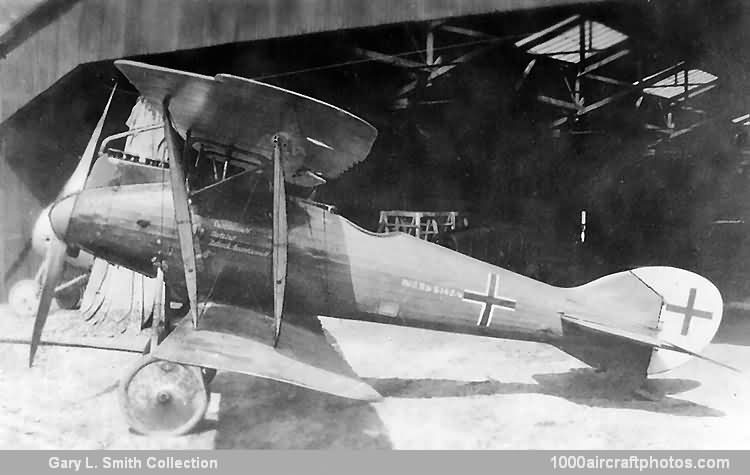On October 17, 1917, the first of three prototypes of the D.VI fighter was rolled out as the 1,000th aircraft manufactured by LFG. Whereas the D.V had been essentially an attempt to enhance the capabilities of the D.III design, the D VI was an entirely new design. Utilizing the 'Klinkerrumpf' fuselage constructional method first employed on the abortive D.IV (Dr.I), the D.VI entered flight test in November 1917, initially with a 160 hp Mercedes D III engine. As supplies of this engine were restricted, the 185 hp Benz Bz IlIa was installed in at least one of the three prototypes.
Testing continued through January 1918, being hampered by inclement weather and difficulties in achieving a suitable propeller match with the engine-airframe combination. After participating in the 1st D-type contest at Adlershof, the D.VI passed its type test on February 9, 1918, an initial order being placed for 50 aircraft. By the time WW I came to an end, orders had been placed for 350 D.VIa (Mercedes D IIIa) and D.VIb (Benz Bz IIIa) fighters.
Both the D.VIa and D.VIb began to reach combat units in May-June 1918, 58 of the former and twelve of the latter being included in the frontline inventory of August 31. Pilots did not consider the D.VI to be anything more than a marginal improvement over the Albatros D.Va and Pfalz D.IIIa that it was intended to replace (it was slightly faster and more maneuverable, but had a lower climb rate), yet it remained in limited production until the end of the conflict. Of the 350 built, 200 were of the D.VIb version to which the following data relate. Reportedly two aircraft were transferred to the USA."
Span: 30 ft 10.87 in (9.42 m)
Length: 20 ft 8.82 in (6.32 m)
Height: 9 ft 2.25 in (2.80 m)
Wing area: 238.1 sq.ft (22.12 sq.m)
Weight empty: 1,446 lb (656 kg)
Loaded weight: 1,865 lb (846 kg)
Max speed: 124 mph (199 kmh)
Climb: to 16,405 ft (5,000 m) 19 min
Endurance: 2 hr
